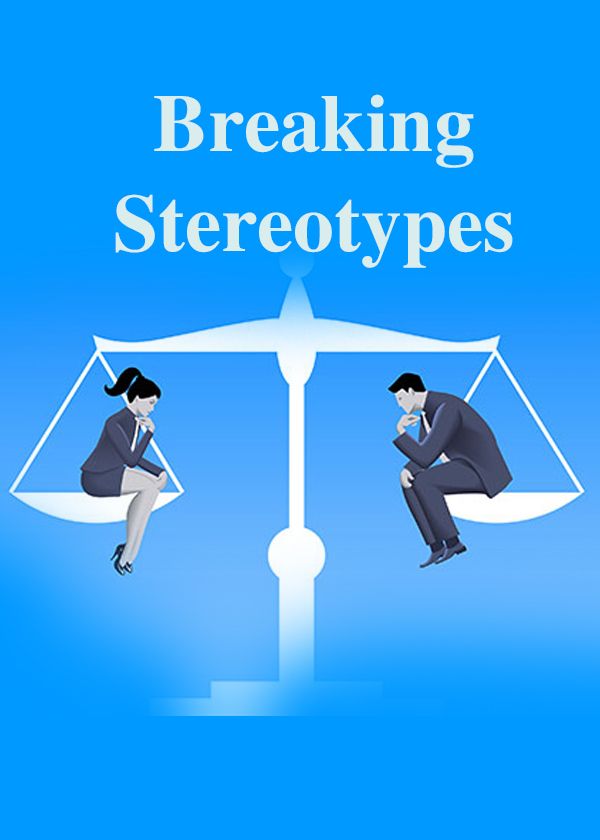Author: Ritu Singhal, Prestige institute of management and research Indore
INTRODUCTION
Breaking societal stereotypes involves challenging preconceived notions and biases that are deeply ingrained in culture and social norms. These stereotypes often limit individuals based on factors such as gender, race, ethnicity, age, religion, sexual orientation, and abilities. Stereotyping is a pervasive issue in societies across the world. It involves oversimplified and fixed ideas about a group of people based on characteristics such as gender, race, religion, age, or socioeconomic status. These stereotypes, often deeply rooted in cultural narratives, affect our interactions, beliefs, and attitudes, and can lead to discrimination and social inequality. Breaking the stereotyping norms of society is vital for fostering inclusivity, understanding, and growth. This essay explores the impact of stereotypes, the mechanisms that sustain them, and practical steps to break these societal norms.
Understanding Stereotypes and Their Impact
Stereotypes are generalized beliefs about a particular group of people. They can be positive, negative, or neutral, but most often, they lead to biased or unfair perceptions. For instance, women are often stereotyped as more nurturing but less competent in leadership roles than men. Similarly, racial stereotypes can pigeonhole people of certain ethnicities into specific social roles or careers. These stereotypes are harmful because they limit individuals’ potential and perpetuate systemic discrimination.
The impact of stereotypes is far-reaching. They affect individuals’ self-esteem and self-identity, leading to a phenomenon known as “stereotype threat,” where people fear confirming negative stereotypes about their social group. This fear can affect performance in academic, professional, and social contexts. Moreover, stereotypes reinforce social hierarchies and power imbalances by justifying discriminatory practices and policies. When these stereotypes become institutionalized, they contribute to persistent inequalities in education, employment, healthcare, and the criminal justice system.
Mechanisms that Sustain Stereotypes
Stereotypes are sustained by various mechanisms, including socialization, media representation, and cognitive biases. From an early age, people learn stereotypes through family, peers, schools, and other social institutions. The media plays a significant role in reinforcing stereotypes by portraying certain groups in specific ways. For example, television shows and movies often depict certain ethnicities in stereotypical roles, such as criminals, maids, or terrorists, which can shape public perception and reinforce prejudice.
Cognitive biases also play a role in perpetuating stereotypes. Humans tend to categorize information to make sense of the world, a process known as “social categorization.” While this helps us process information quickly, it also leads to “out-group homogeneity,” where we see members of groups different from our own as more similar to each other than they are. This bias contributes to stereotyping, as it prevents us from seeing people as individuals with unique traits and experiences.
Breaking Stereotyping Norms
To break stereotyping norms, society needs a comprehensive approach that involves education, media reform, policy changes, and individual action. Here are several strategies to dismantle stereotypes:
Education and Awareness
Education is one of the most powerful tools to combat stereotypes. Schools and universities should implement curricula that teach students about the dangers of stereotypes, bias, and discrimination. Programs that encourage empathy, critical thinking, and perspective-taking can help students understand the diversity of human experiences. Diversity training programs in workplaces and communities can also raise awareness about unconscious biases and promote more inclusive behaviors.
Additionally, promoting diverse narratives in history, literature, and social studies can challenge existing stereotypes and highlight the contributions of marginalized groups. For instance, including stories of successful women leaders, LGBTQ+ pioneers, and leaders from diverse ethnic backgrounds can challenge the stereotypical images associated with these groups.
Media Representation
Media has the power to shape public perception and attitudes. It is crucial for the media industry to commit to diverse and accurate representation of all groups. This involves moving beyond tokenism and including more nuanced portrayals that reflect the complexity and diversity within social groups. Media creators should avoid relying on stereotypes for character development and storylines, and instead, offer multidimensional characters that break away from traditional norms.
Moreover, supporting independent media outlets and content creators from marginalized communities can provide alternative narratives and perspectives. Platforms like social media also offer spaces for underrepresented voices to share their stories, challenge stereotypes, and build new narratives that counter the dominant ones.
Policy Changes
Systemic change is essential for breaking stereotyping norms at a broader level. Governments and institutions need to implement policies that promote equality and inclusivity. Anti-discrimination laws, affirmative action, and diversity quotas in hiring can help address systemic biases and ensure fair representation of all groups in various sectors.
Workplaces and organizations should also adopt policies that promote diversity and inclusion. This includes creating inclusive hiring practices, providing equal opportunities for growth and advancement, and establishing safe spaces for marginalized employees to express their concerns. Policies should also address pay gaps, unequal access to opportunities, and other forms of discrimination that may result from stereotyping.
Challenging Personal Biases
On an individual level, breaking stereotyping norms begins with self-reflection and personal accountability. People need to be aware of their own biases and actively work to challenge them. This involves questioning the assumptions we make about others based on their appearance, background, or group affiliation. Educating ourselves about different cultures, listening to marginalized voices, and engaging in open dialogue with people from diverse backgrounds can help broaden our perspectives and reduce prejudice.
Practicing empathy and actively engaging in conversations about bias and privilege can also help break down stereotypes. When people understand the experiences of those who are different from them, they are less likely to rely on stereotypes and more likely to see the individual beyond the group identity.
Promoting Cross-Cultural Interactions
Encouraging cross-cultural and intergroup interactions can help reduce stereotypes and prejudice. Research shows that positive interactions between different social groups can reduce intergroup bias and foster mutual understanding. Community programs, cultural exchange initiatives, and inclusive social events can help bridge divides and promote a more inclusive society.
For example, organizing events that celebrate different cultures, religions, or lifestyles can help people learn about and appreciate diversity. Intergroup dialogues and workshops can provide opportunities for people to share their experiences, address biases, and work together to create a more inclusive environment.
Support and Advocacy for Marginalized Groups
Supporting marginalized groups and advocating for their rights is essential for breaking stereotyping norms. This can involve supporting organizations and movements that work toward social justice, equity, and inclusion. Allyship—standing in solidarity with marginalized communities—is also important. Allies can use their privilege and platforms to amplify the voices of those who are often silenced, challenge discriminatory practices, and push for systemic change.
Reframing Language and Communication
Language plays a crucial role in shaping our thoughts and perceptions. Reframing language and communication to be more inclusive and respectful can help break down stereotypes. This involves avoiding generalizations, using person-first language, and being mindful of the words and phrases we use to describe people from different groups. Language that reflects respect, dignity, and recognition of individuality can go a long way in changing societal norms.
Conclusion
Breaking the stereotyping norms of society requires a collective effort from individuals, institutions, and communities. While stereotypes have deep roots in social, cultural, and cognitive processes, they are not immutable. Through education, media reform, policy changes, challenging personal biases, promoting cross-cultural interactions, supporting marginalized groups, and reframing language, we can work towards a society that values diversity, inclusivity, and equality. By breaking these norms, we not only create a more just and equitable world but also unlock the full potential of every individual, free from the constraints of limiting stereotypes.
Frequently asked questions:
What is stereotyping, and why is it harmful?
Answer: Stereotyping involves assigning a fixed set of characteristics or attributes to a group of people based on their gender, race, ethnicity, age, religion, or other social categories. It is harmful because it oversimplifies the diversity within a group, leads to prejudice, discrimination, and reinforces social inequalities.
How do stereotypes develop in society?
Answer: Stereotypes develop through various channels, such as cultural norms, media representation, personal experiences, upbringing, and societal institutions. They are often perpetuated by repeated exposure to biased or one-dimensional portrayals of certain groups.






